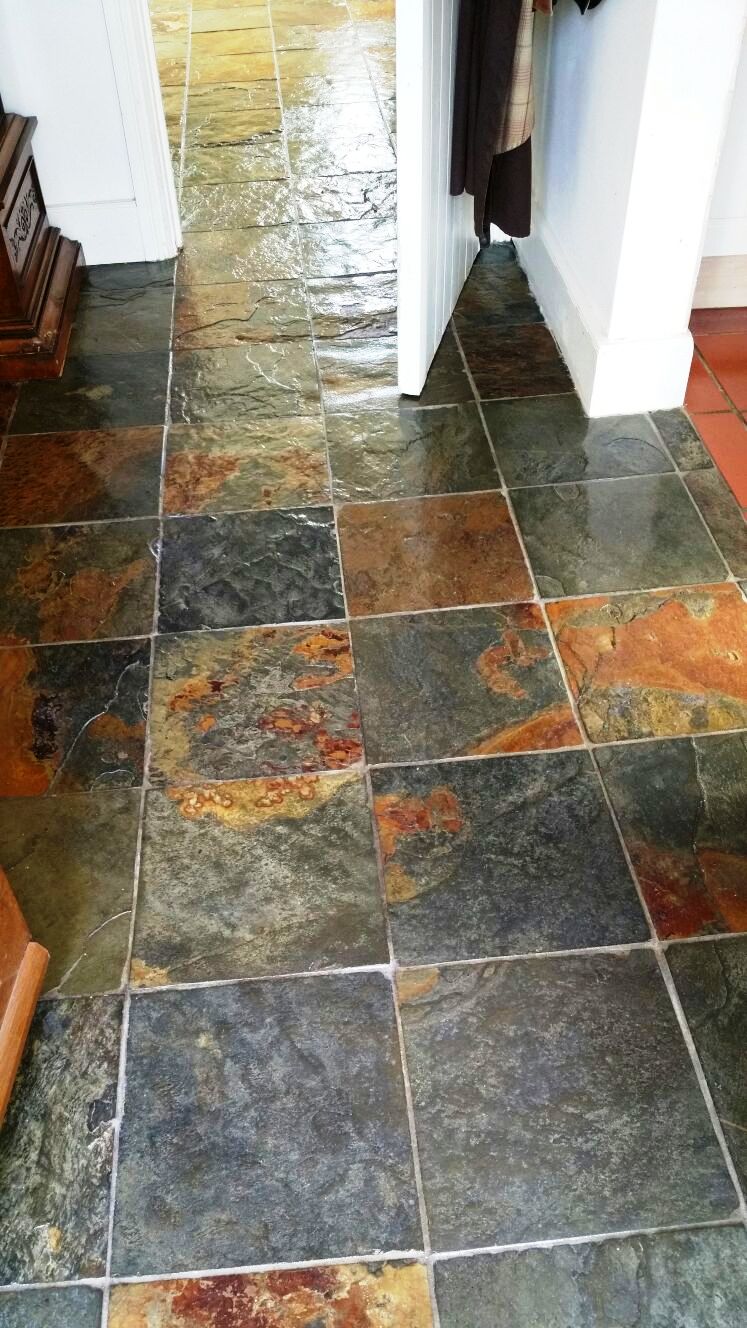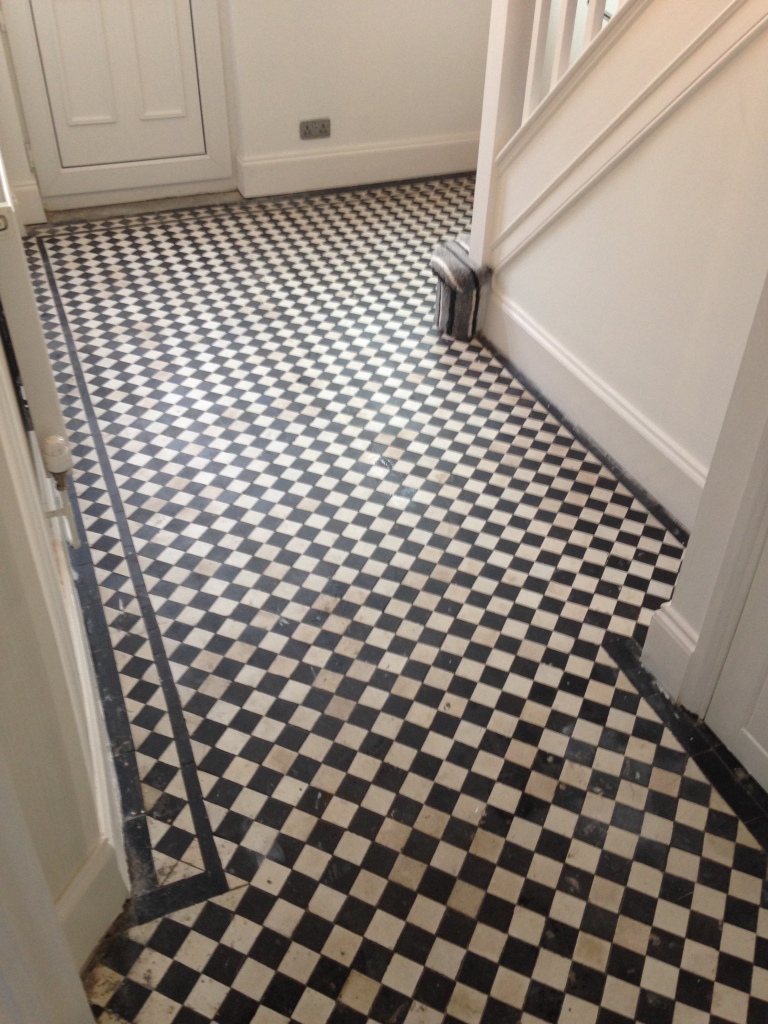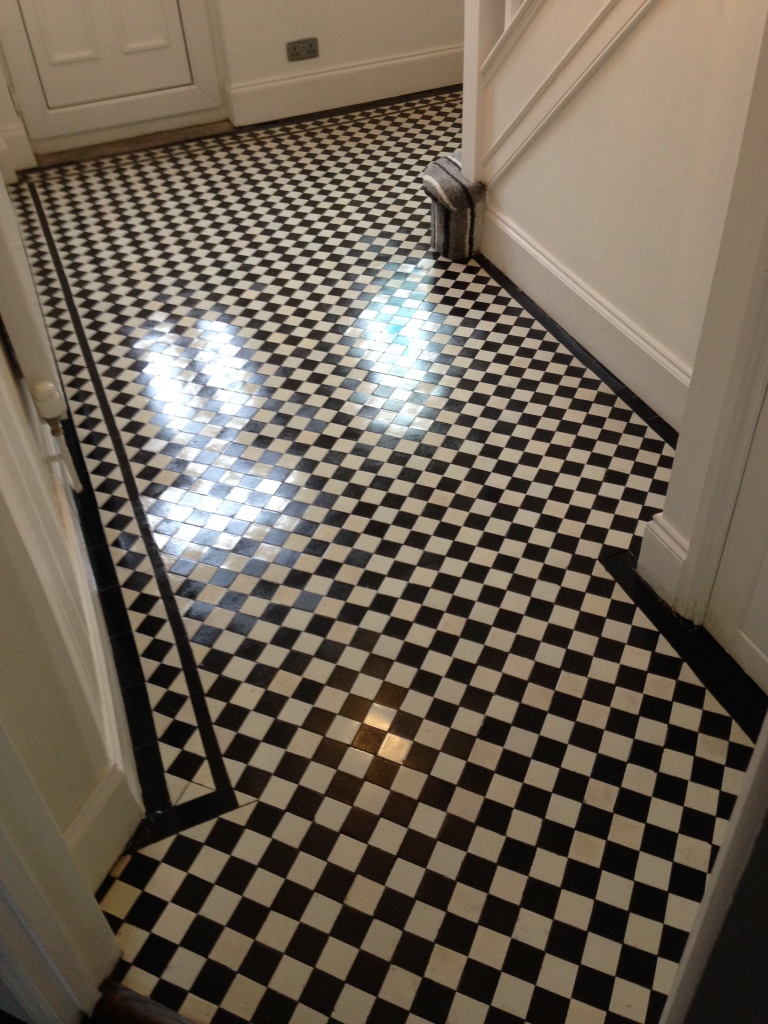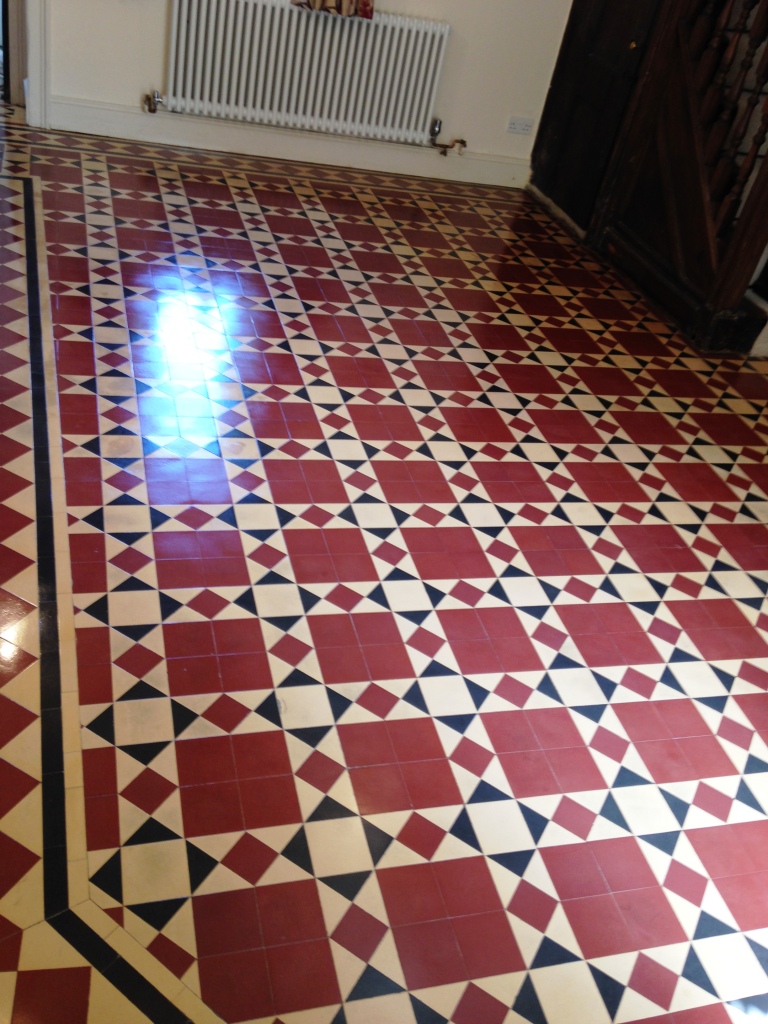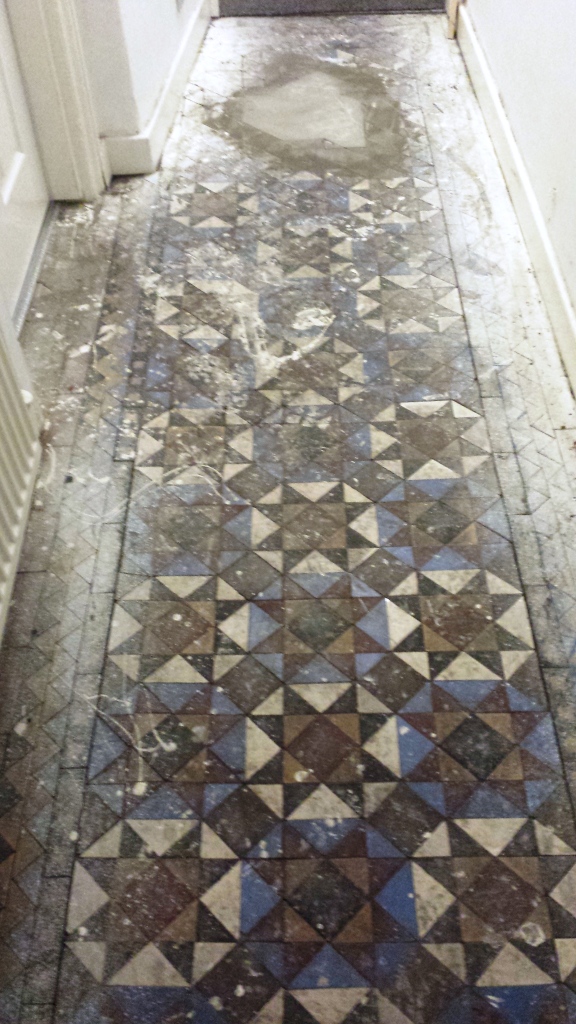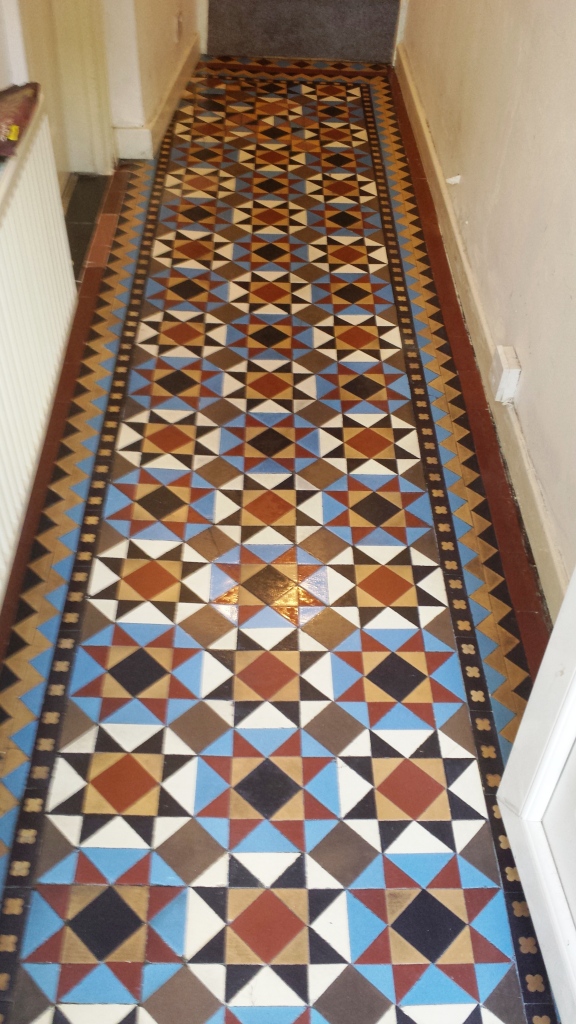It's fairly common for owners of older properties - especially houses those that are over 100 years old or more - to find original Victorian tiled flooring hidden underneath carpet. It can wait years for the tiles to be discovered, by which time they have amassed huge amounts of dirt and dust.
Such was the case at this property in
Bridlington, a Yorkshire town through which a stream known as the 'Gypsey Race' runs, before emptying in the North Sea at the Bridlington Harbour. Interestingly enough, folklore says that when the stream is flowing, bad fortune is at hand. The stream must not have been running on the day that we restored this Victorian hallway, as we managed to achieve some truly fantastic results!!
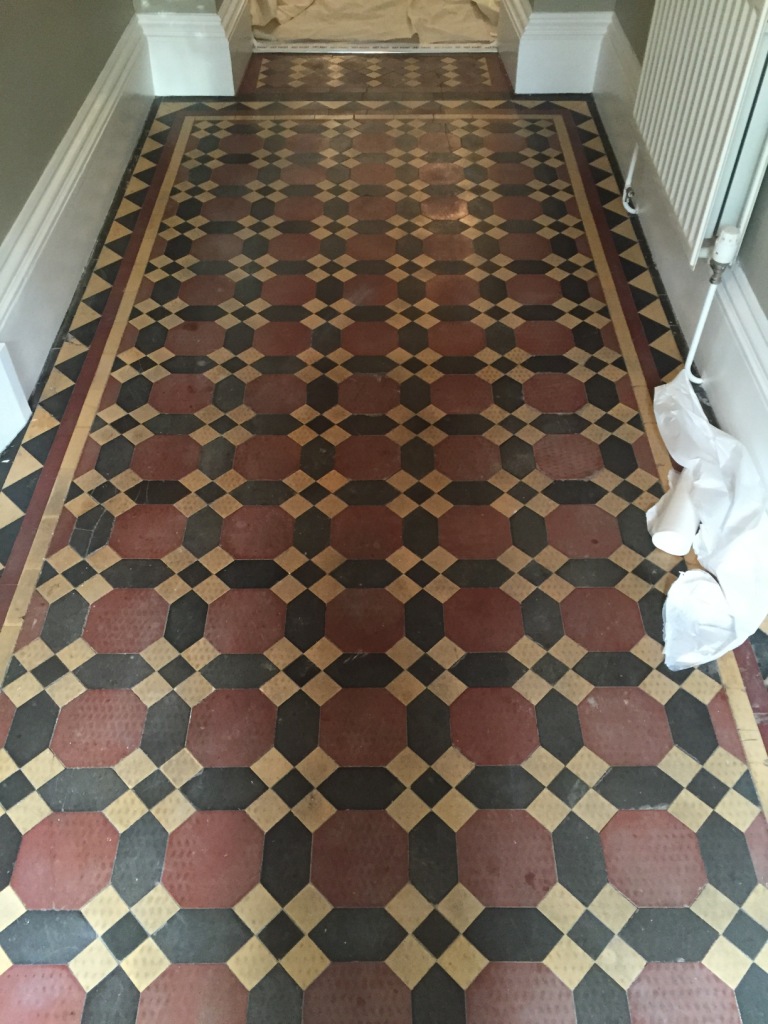
The hallway had been severely dulled after going years without professional care. We set about giving it the thorough clean and fresh seal that I'd des partly needed. Here's how we did it.

Cleaning a Dirty Victorian Tiled Hallway
Our first task was to remove any old, no longer effectual sealer. We did this by liberally applying a strong dilution of our alkaline-based
Tile a Doctor Pro Clean, which doubles as a reliable cleaner and a stripper capable of stripping away old sealer. The product was worked into the tiles using a black stripping pad fitted to a 17" rotary machine, and the process was repeated three times.

I noticed that there was still some stubborn dirt and old sealer around the edges of the hallway, so I used some of our handheld
diamond encrusted burnishing blocks to grind it away. To finish the cleaning process, we washed the floor with
Tile Doctor pH Neutral Tile Cleaner, leaving it fresh and ready to be sealed once left to dry overnight.
Sealing a Dirty Victorian Tiled Hallway
Upon our return to the property the next day, we ran some quick tests to check for any excess moisture (even a small amount could have damaged the performance of the new sealer). Once satisfied with the the condition of the floor, we proceeded to see it with an impregnating sealer, meaning a sealer that penetrates into the pores of the tile to fill them and therefore prevent trapped dirt and ingrained stains.

Our impregnating sealer, Tile Doctor Colour Grow, has the added benefit of being colour intensifying, which really highlights the unique colourful patterns of the tiles. To give the floor a durable sheen finish, as requested by the customer, we also added a coat of
Tile Doctor Seal and Go sealer.

The result was a complete transformation of the condition and appearance of this great Victorian tiled hallway. Our customer is very pleased - the floor is now a complete asset to any property, and will now be easier to keep looking great in future.
Source:
Victorian Tile and Grout Mainteanance Service in East Yorkshire

